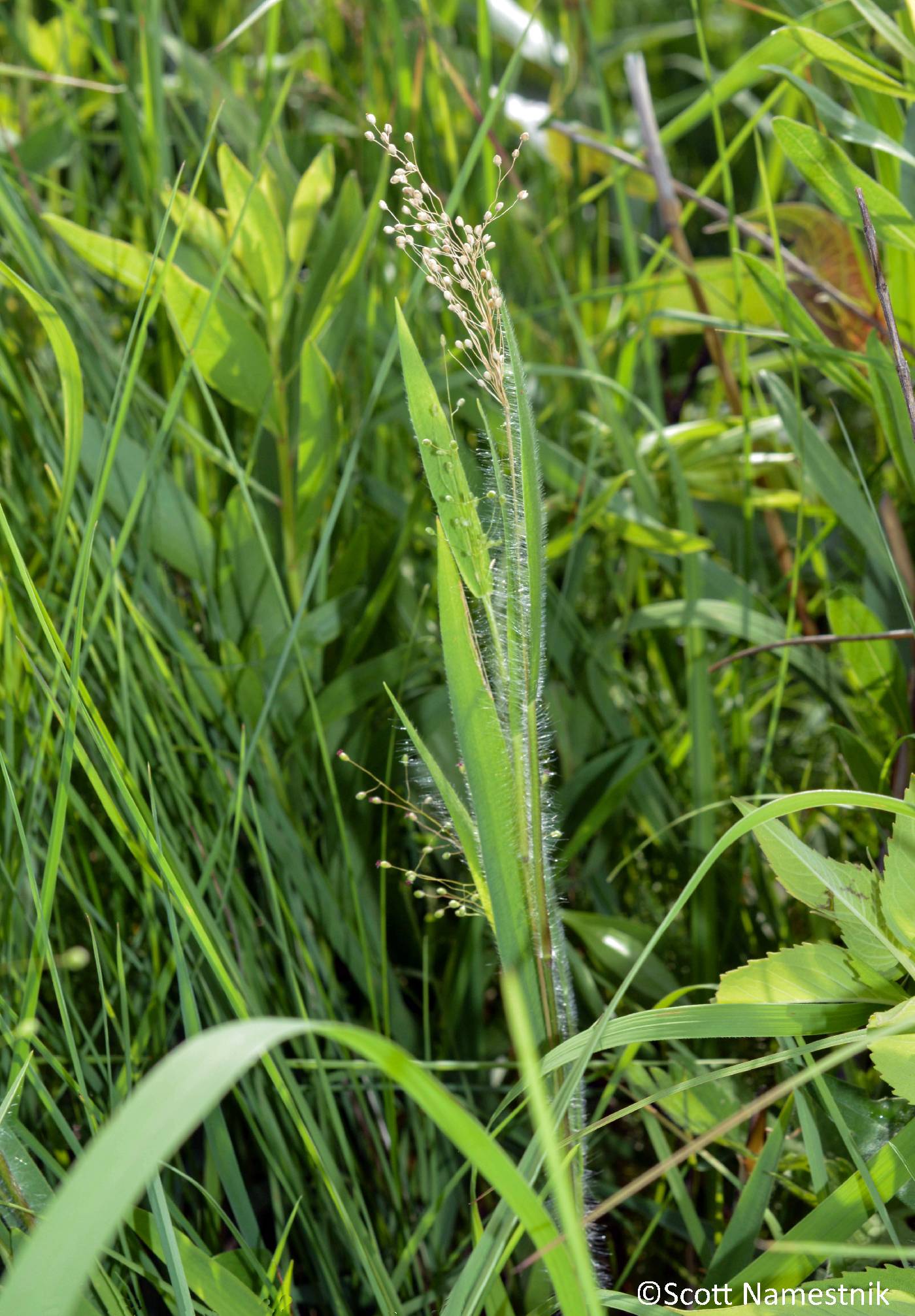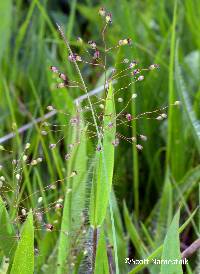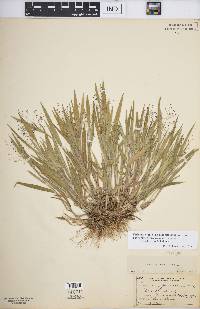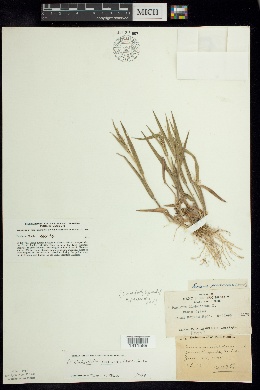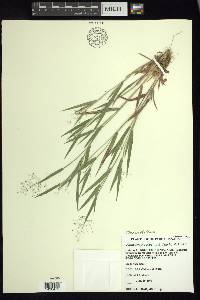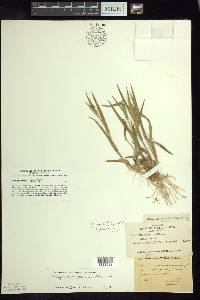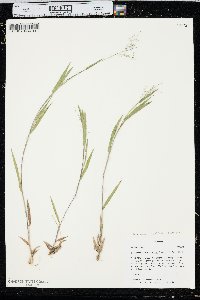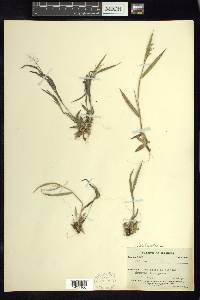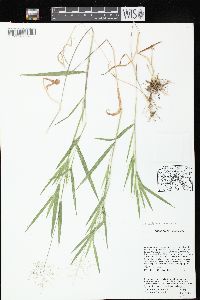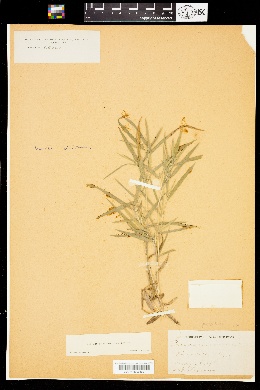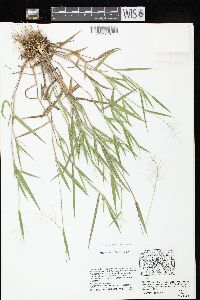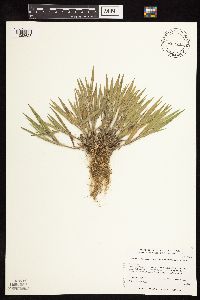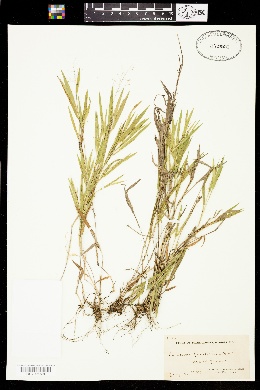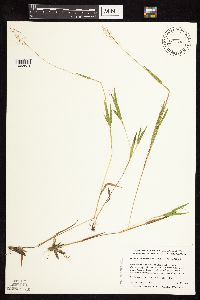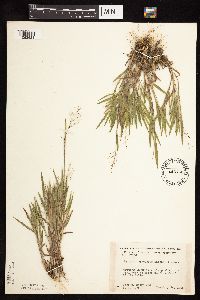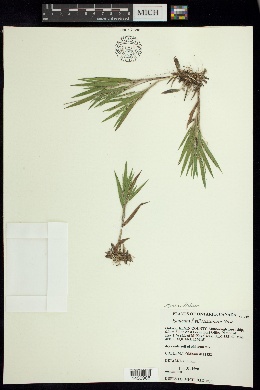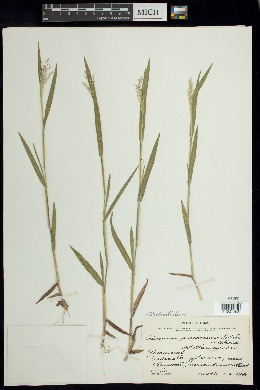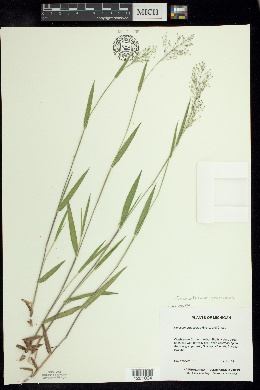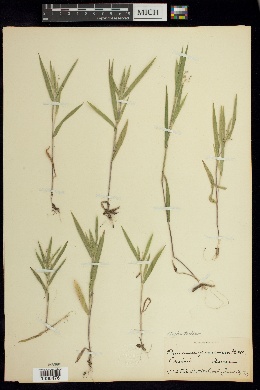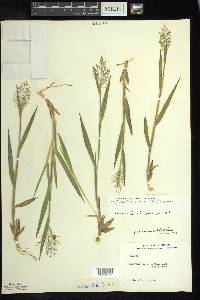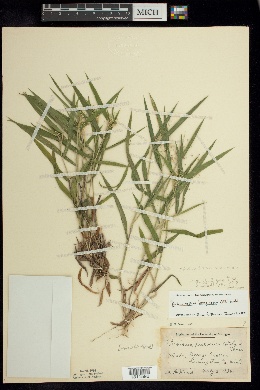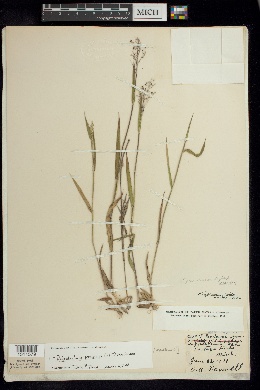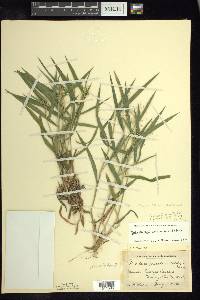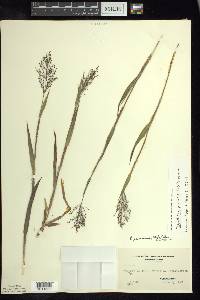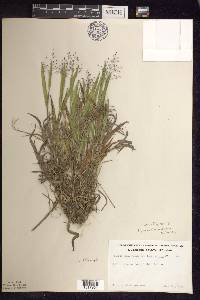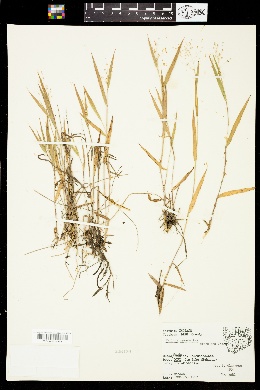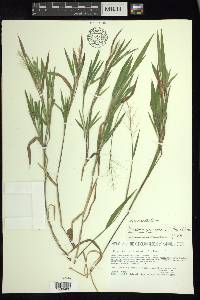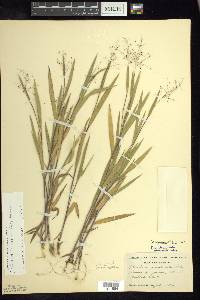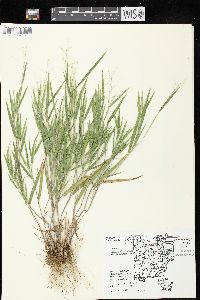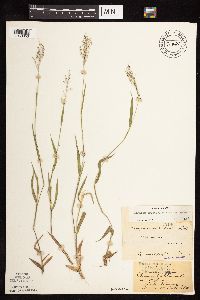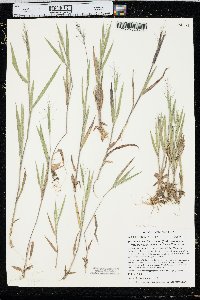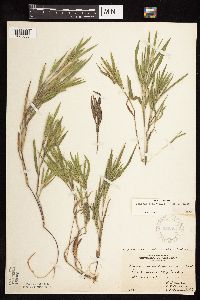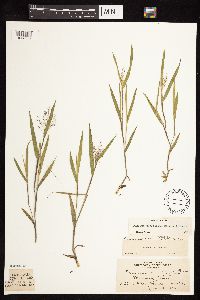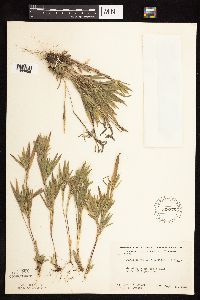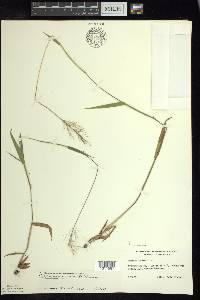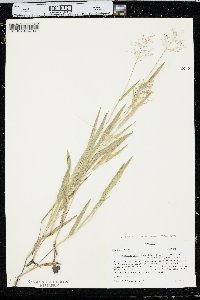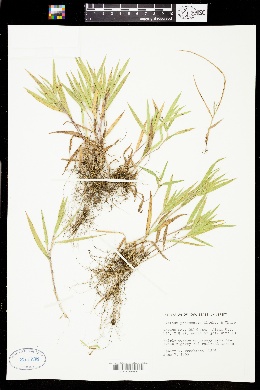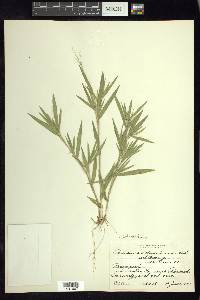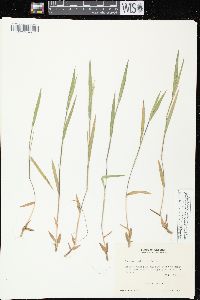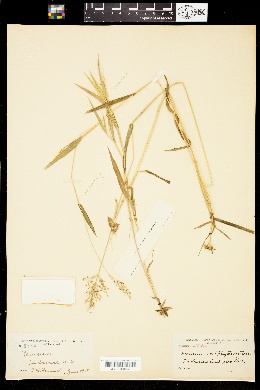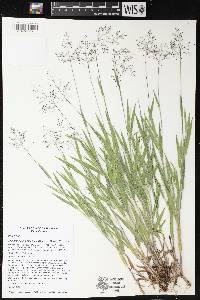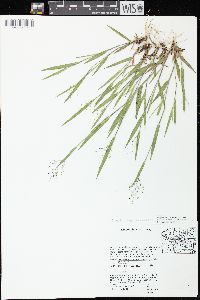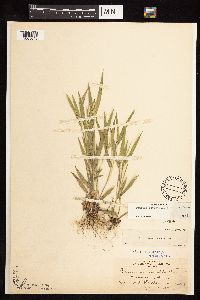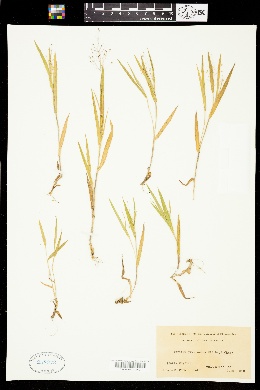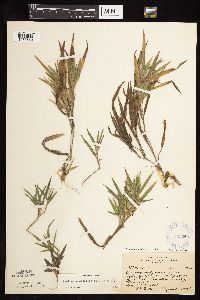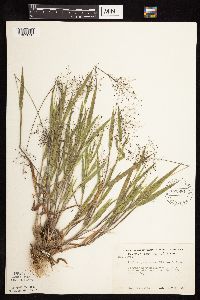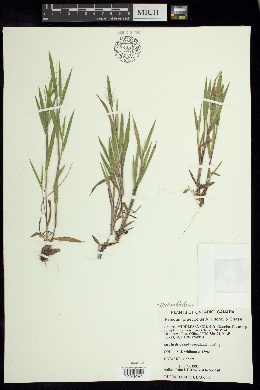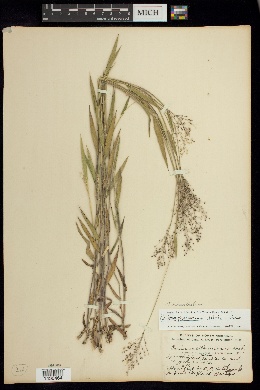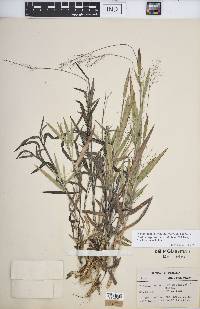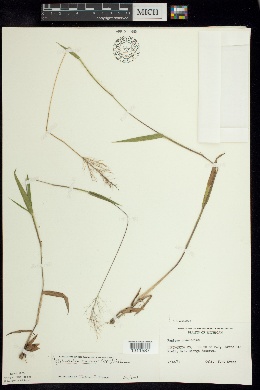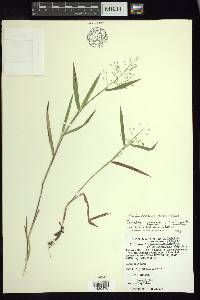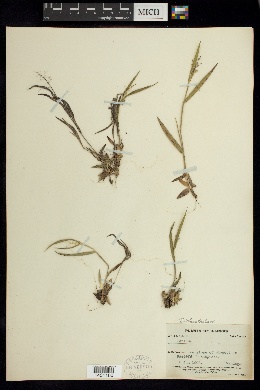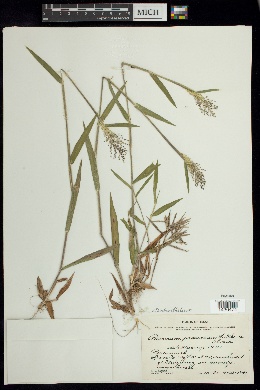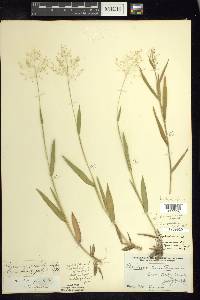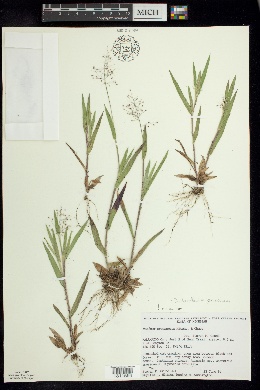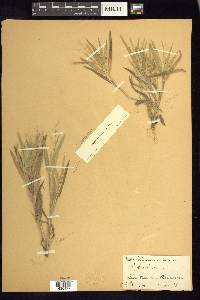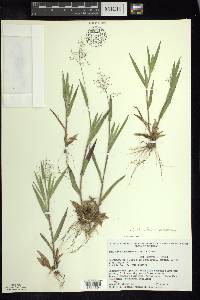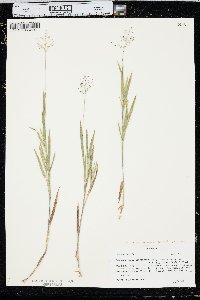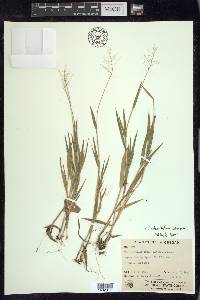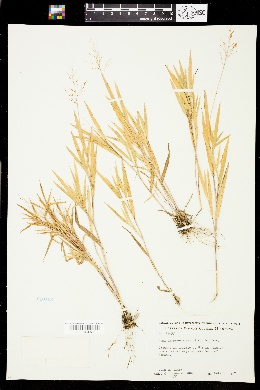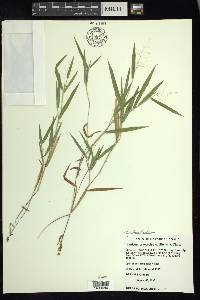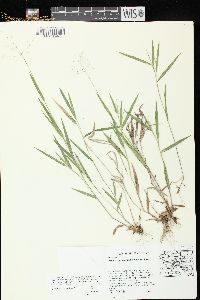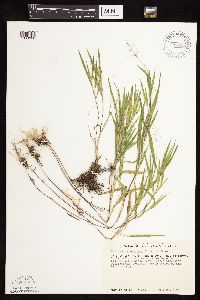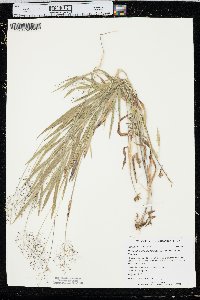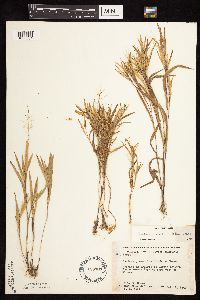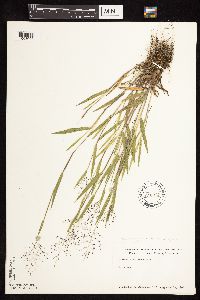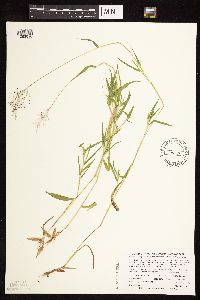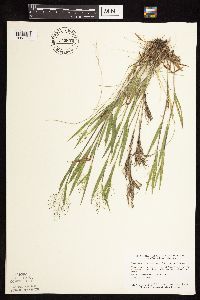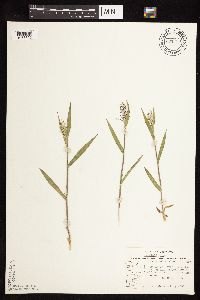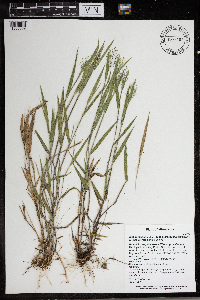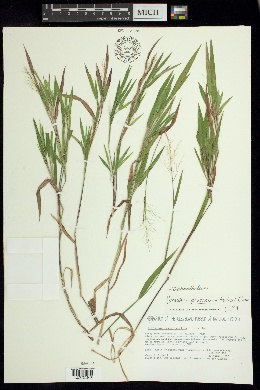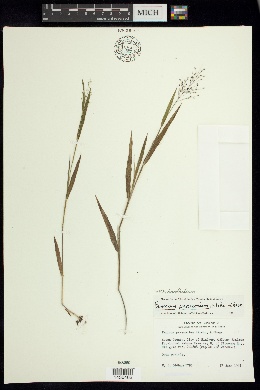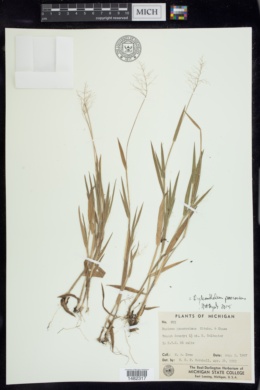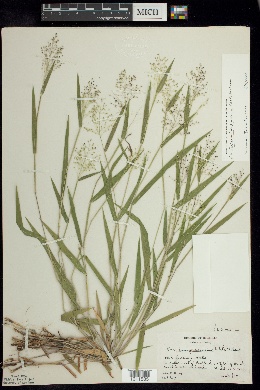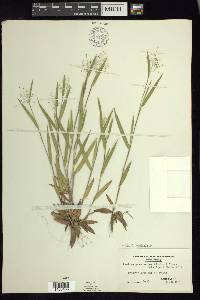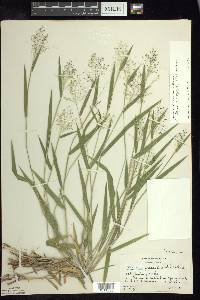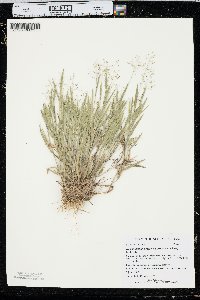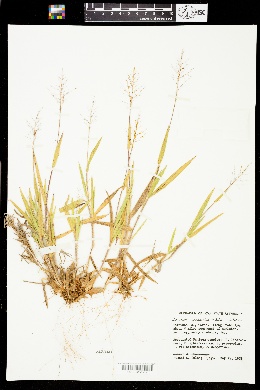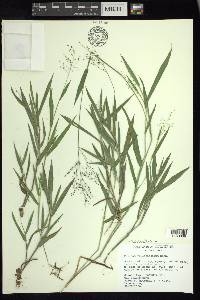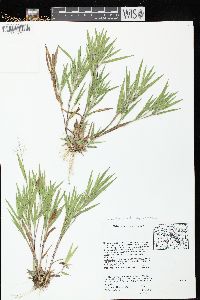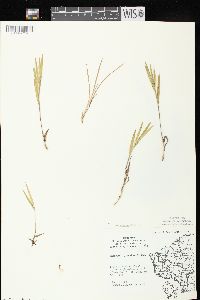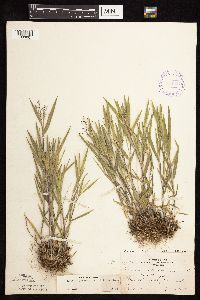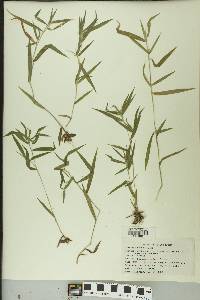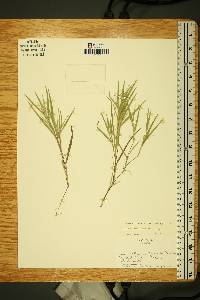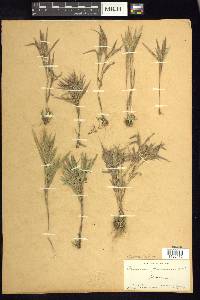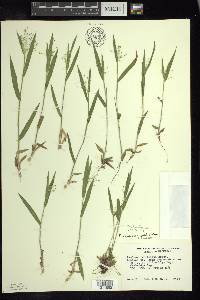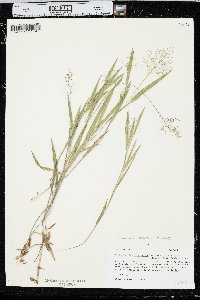Dichanthelium ovale subsp. praecocius
|
|
|
|
Family: Poaceae
Egg-Leaf Witch Grass
[Dichanthelium praecocius (Hitchc. & Chase) Mohlenbr.] |
Basal blades 1-3 cm, sparsely to densely evenly pilose. Culms less than 1 mm thick, wiry; internodes with soft, spreading or retrorse papillose-based hairs longer than 4 mm. Cauline sheaths with soft, spreading or retrorse hairs, hairs usually longer than 4 mm, papillose-based; ligules 3-4 mm; blades 2-6 mm wide, both surfaces densely pilose. Spikelets 1.8-2.1 mm, obovoid or ellipsoid, pilose with papillose-based hairs. Dichanthelium ovale subsp. praecocius is most common in the midwest and in the tallgrass prairie states. It intergrades with subsp. villosissimum, especially in the western parts of the latters range, and to a lesser extent, with D. acuminatum subsp. fasciculatum in the northern part of its range. Perennial herb, tufted 15 cm - 0.6 m tall Inflorescence: a terminal, branched arrangement of spikelets (panicle). Primary panicles atop the culms, 3 - 10 cm long, almost as wide when fully open. Secondary panicles (when present) atop the branches. Fruit: a caryopsis, indehiscent, enclosed within the persistent lemma and palea. Culm: mostly spreading or ascending, 15 cm - 0.6 m long, under 1 mm thick, round in cross-section, hollow, with soft, bumpy-based hairs along the internodes that are over 4 mm long. Nodes sparsely to densely bearded. Fall phase with decumbent to prostrate culms, forming dense clusters of branches that have upright, slightly reduced leaf blades and highly reduced secondary panicles. Spikelets: about 2 mm long, ellipsoid or reverse egg-shaped with a blunt to nearly pointed apex, softly hairy with bumpy-based hairs. Basal leaves: in a rosette. Blades 1 - 3 cm long, lance-shaped, distinct from the stem blades, sparsely to densely soft-hairy, often fringed with hairs. Stem leaves: four to seven, alternate, two-ranked. Sheaths shorter than internodes, with soft, bumpy-based hairs that are over 4 mm long. Ligules 3 - 4 mm long, composed of hairs. Blades relatively firm, spreading or ascending, distinctly longer and narrower than basal leaves, 4 - 10 cm long, 2 - 6 mm wide, lance-shaped with a rounded or slightly narrowed base, parallel-veined, densely hairy, marginally whitish and minutely rough, fringed with hairs basally. Glumes:: Lower glumes one-third to one-half as long as spikelets, triangular with a more or less pointed apex, veined (not strongly). Upper glumes a bit shorter than lower lemmas and upper florets when mature, veined (not strongly). Lemmas:: Lower lemmas similar to upper glumes. Upper lemmas longitudinally lined, shiny, with rolled-up margins above. Paleas:: Lower paleas shorter than lower lemmas, thin. Upper paleas longitudinally lined. Florets:: Lower florets sterile. Upper florets bisexual, stalkless, 1.5 - 2.5 mm long, a bit less than half as wide as long, ellipsoid with a nearly pointed apex, plump. Anthers three. Stigmas red. Similar species: No information at this time. Habitat and ecology: Rare in the Chicago Region. Found in sandy areas. Occurence in the Chicago region: native Etymology: Dichanthelium comes from the Greek words di, meaning twice, and anth, meaning flowering, referring to plants that may have two flowering periods. Ovale means oval. Praecocius means "early maturing." Author: The Morton Arboretum From Flora of Indiana (1940) by Charles C. Deam This species is rare in the sands of the northern counties. I have, also, a specimen which was found in Harrison County, about 3 miles east of Elizabeth on a rocky wooded slope along the road leading from Elizabeth to Stuart's Landing on the Ohio River. This rocky slope is rich in rare Indiana plants such as Eragrostis capillaris. ...... Treated as a distinct species, D. praecocius, by J. Thomas (2015). Indiana Coefficient of Conservatism: C = 10 Wetland Indicator Status: FACU |

